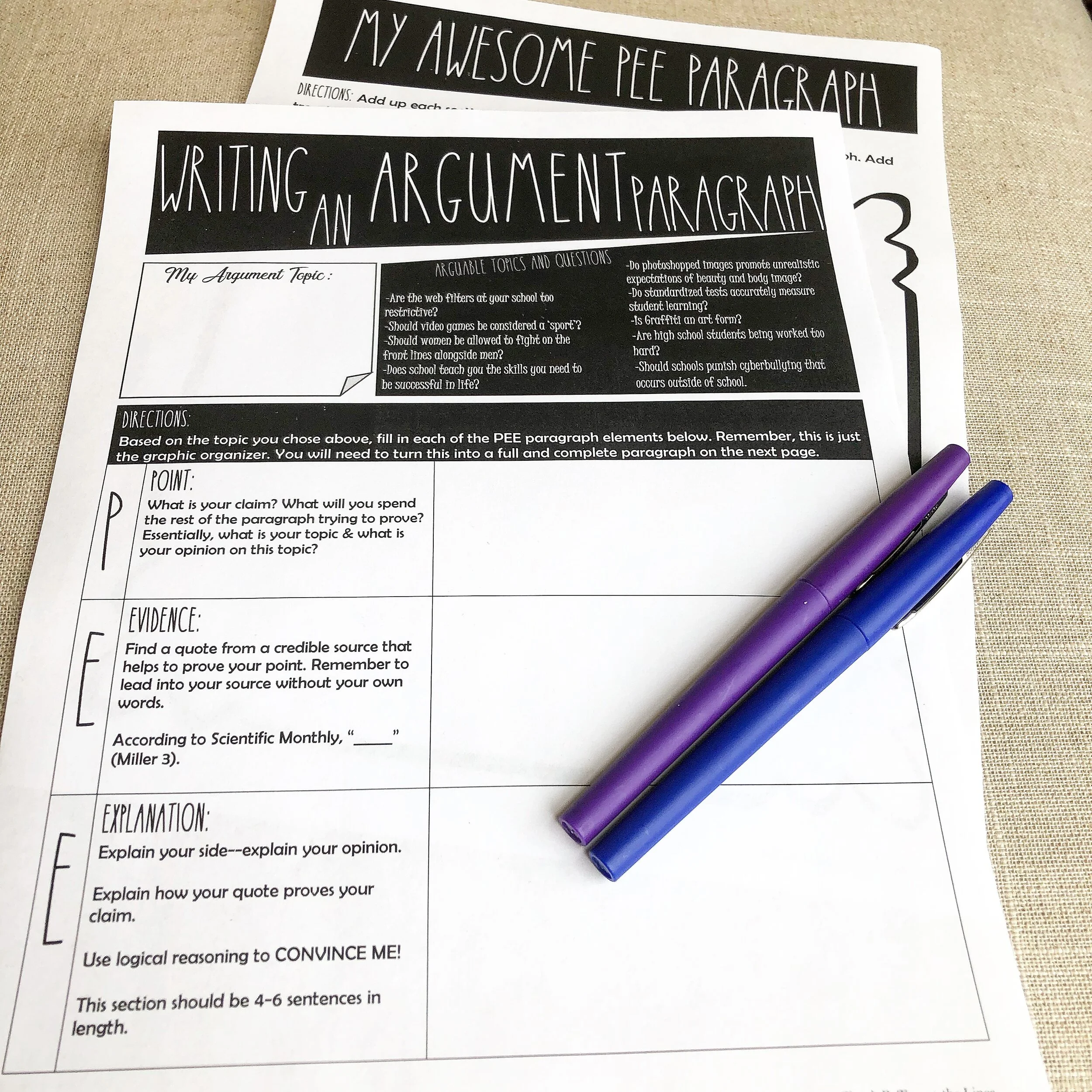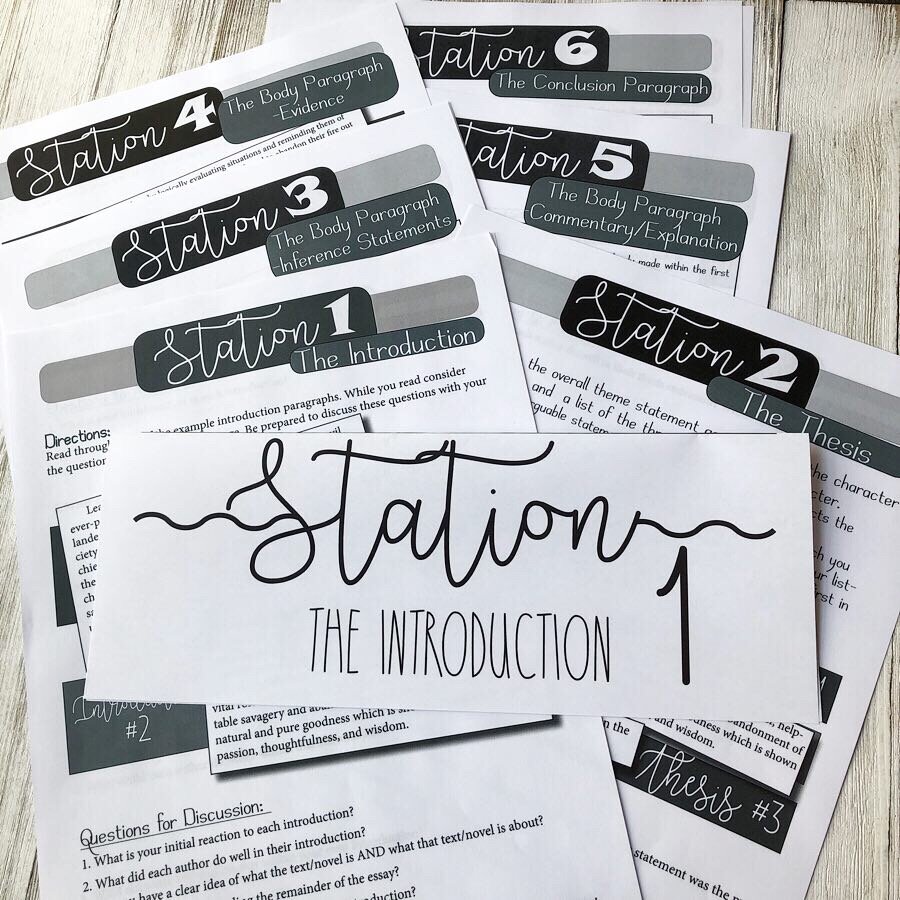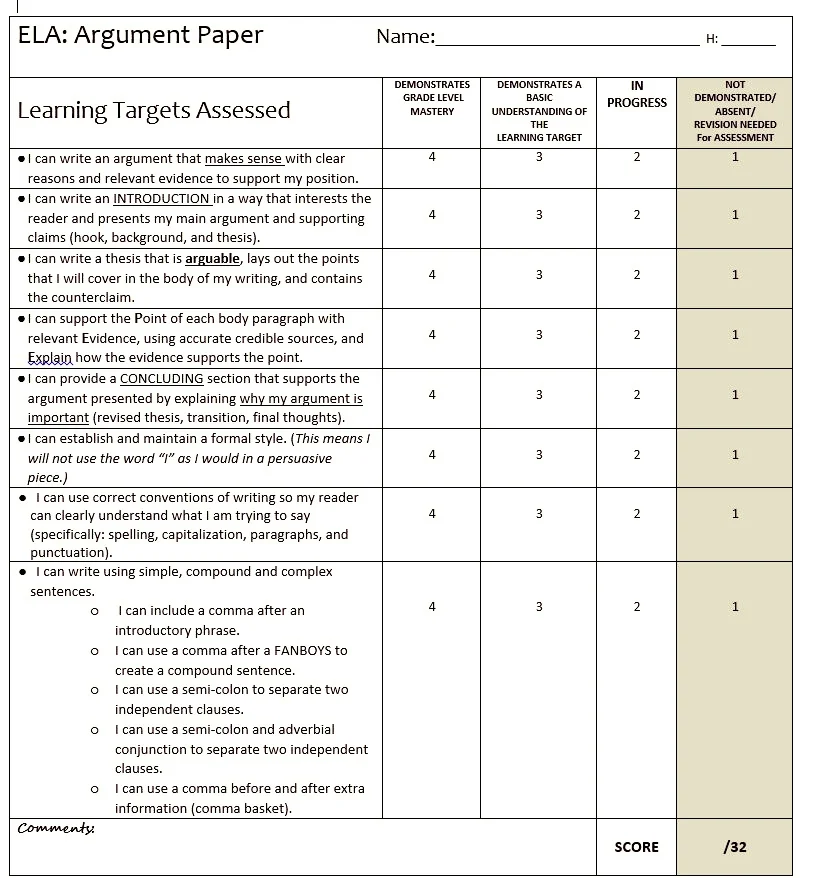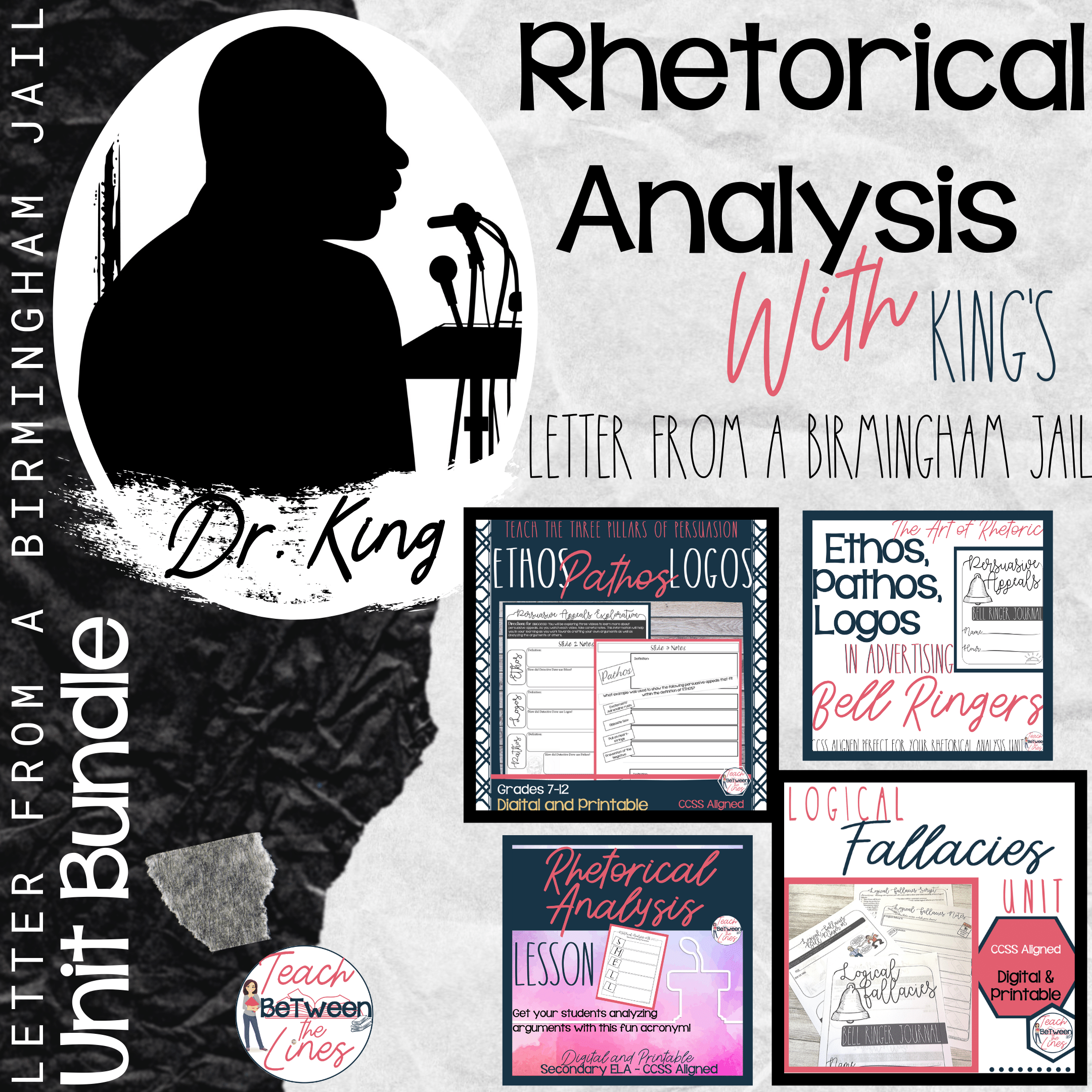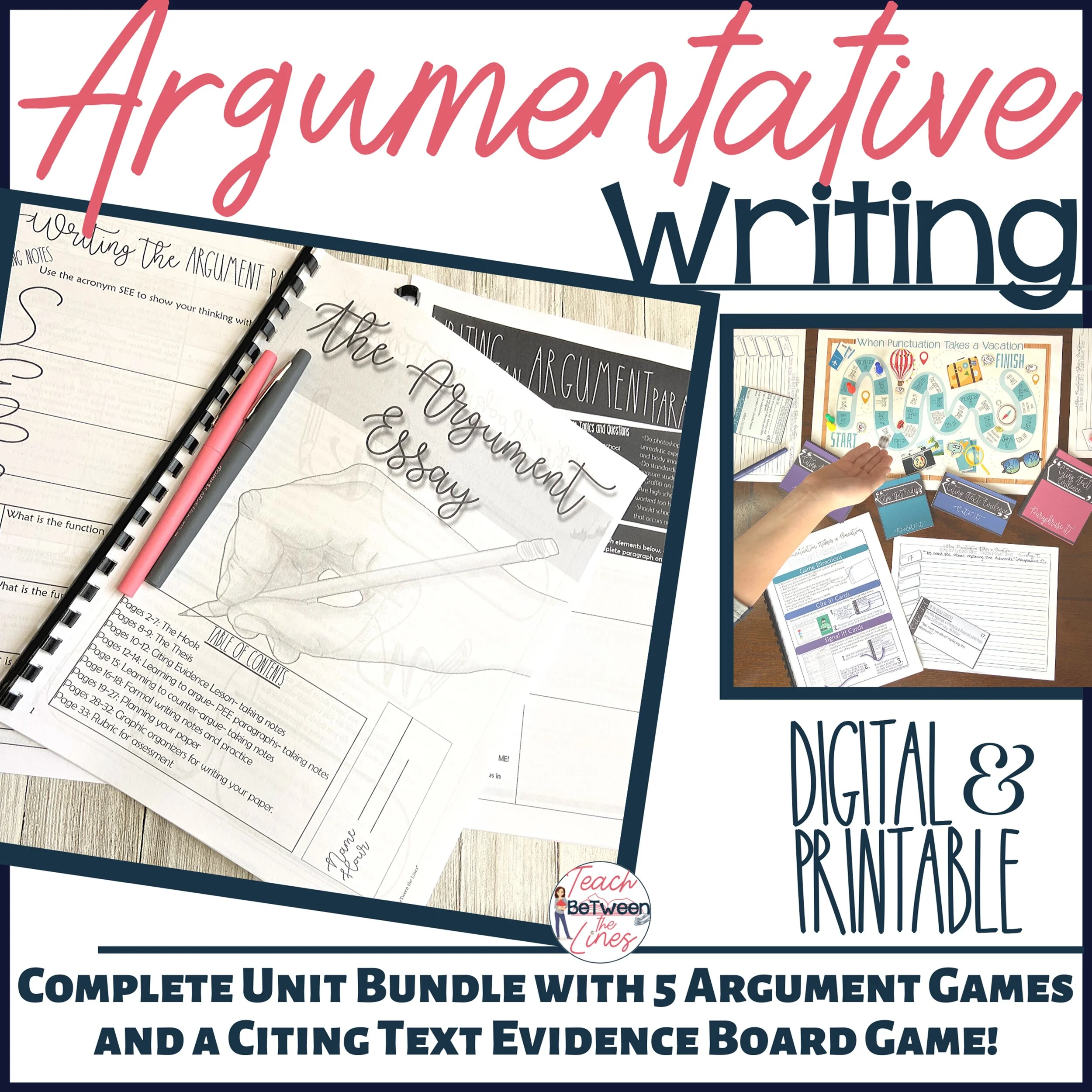Supporting Struggling Writers: 6 Strategies for Turning Struggling Students into Successful & Confident Writers!
1. Break down the steps of each writing assignment with fun acronyms.
There are many acronyms flying around in the world of education for drafting an argument paragraph. I have seen (and used) the CRE method- Claim, Reason, Evidence. I have used the ARE method for debate arguments- Argument, Reason, Evidence. My favorite, however, is the PEE acronym -- Point, Explanation, Evidence. What is more fun to a group of teenagers than saying “get ready to PEE on your papers?” Trust me, heads will perk, eyes will flutter up from their cell phones directly to you; they will question if they have heard you correctly, and interest in your argument writing lesson will soar! I usually follow this initial statement by saying “Yes, that is correct, I will be teaching you how to PEE all over papers.” This will catch the remaining thought wonderers, day dreamers, secret lap texters, and your educationally frustrated and disengaged teens. They will be putty in your hands- excitedly awaiting the explanation of such a silly statement! You may see a few eye rolls as you begin to explain, but anyone with a teenager at home will tell you that this automatic teenage response will show that- at the very least- you have been heard!
Looking for a fun literary analysis acronym? Why not use the power of the iPhone? I use the iSEE acronym. Somehow the use of a lowercase i at the start of a word garners interest in teenagers!
i- Inference
S- summary of the text at this point
E- evidence
E- explanation
I love to use the combination of engaging stations and meaningful mentor texts to help me teach this acronym. I have my students explore examples of each of these elements from quality writing as they move about the stations. They get a chance to discuss how the author completed each of these elements successfully in their writing!
2. Graphic Organizers
Of course, this is a no brainer for ELA teachers! Make your graphic organizers exceedingly specific to your writing purpose and for your audience. For struggling writers, I will include sentence starters to support their idea development. These two images below are examples of specific graphic organizers for an argument my character analysis writing unit and my argumentative writing unit. Both include a great deal of specific details about the drafting of each element. This has been exceedingly helpful for my struggling writers!
3. Assess the Examples
This is an example from my Literary Analysis unit. Students assess this literary analysis based on the rubric I have provided for them!
Whenever I have students draft a new piece of writing, I have them look at quality examples of the particular task ahead of them. I ask them to use the rubric (that will be used to assess their own work) to assess these examples. By doing this, students are seeing quality writing models and are becoming more familiar with the rubric and expectations laid out within. I usually ask students to complete this in partner pairs or small groups so they can collaborate and communicate about the elements of good, quality writing.
4. Explain the WHY
We all know how important it is to get our students to see the purpose behind their learning. It can be easy to bypass this step when we are rushing to introduce a new unit, however. I have found that the greatest impact on my struggling writers came when I explained why they would need to become effective writers. My students have commented (frequently) that the phrase most often heard in my classroom is: “this skill will make you successful in life”. With each new skill or concept, I explain the direct purpose for this particular skill in their future lives. When I teach literary analysis, I explain the multitude of literary analysis responses they will draft in college. When teaching grammar, I give examples of emails to their boss, company newsletters, resumes and cover letters, etc. When teaching argument, I explain that they will one day want to win an argument with their spouse, or convince their boss that they deserve a raise! When students can see the life skill attached to their learning, they are far more engaged, connected, and willing to learn.
5. PUT DOWN THE RED PEN! The art of assessing less...
My first year of teaching high school English, I made the fatal flaw of assessing everything on every assignment. A few assignments into the school year, I was ready to jump off the proverbial bridge. Even if I was not ready to jump, my students would have been ready to push me right over! Nothing is more discouraging to a struggling writer (or writer in general) than seeing a bunch of red ink marks all over their hard work. Nothing is more damaging to teachers than having to leave red ink marks all of their student’s hard work.
I began to see the benefit (for me and my students) in assessing only the specific skills taught within the particular unit. If I have taught my students how to correctly use parenthetical citation, I will look for and correct this if necessary. If I have taught my students how to make compound sentences with FANBOYS, I will expect this to be done correctly; I will mark the page to remind students of this lesson. If students use semicolons incorrectly, or do not put the proper punctuation around their conjunctive adverb, I will not address this until after I have taught these skills.
Build your rubric before you assign the written assignment. Consider what skills your students will need to be successful in life. Yes, in life. Will every students choose the life of an accomplished author? Not likely, but all students will need to be able to communicate clearly and effectively. For our struggling writers, it is especially important to create a rubric that will assess the critical life skills we are trying to build within our students.
This does mean that I will offer different rubrics to different students on occasion. My ‘high fliers’ may be able to draft an argument that will knock your socks off, and they can do so with excellent grammar and punctuation. I will expect more from them and this will be reflected in their rubric. I will ask them to incorporate ethos/pathos/logos. I will ask them to avoid all logical fallacies. I will ask them to draft a counter-argument to refute even the strongest counterclaim. I will ask them to incorporate a variety of sentence structures and quality word choice. A struggling writer may look at this rubric and say “nope, not happening, quitting is better than failing.” Instead, I will ask them to build a quality PEE paragraph, attempt a counterclaim (with a graphic organizer for support) and to use proper punctuation in their compound sentences. Manageable expectations will help your struggling writers to feel success, and will, in-turn, build confidence.
The rubric they receive will specifically outline what I will “red pen”, so students are never surprised by the assessment. This will allow students to draft with a purpose. “If my teacher expects compound sentences in my writing- then I will include them as I draft my response…”
6. Know Your Audience- Incorporate Interesting and Engaging Content.
Allow your students to write about topics that interest them. This, again, is a no brainer for us, remarkable and amazing, ELA teachers. That being said, we can often get caught up in what WE think are amazing writing topics. A few years back, I created an amazing argument analysis unit to coincide with my To Kill a Mockingbird unit. I ask students to analyze Atticus Finch’s closing arguments. I was so excited about this assignment. I thought that all students would be so uniquely engaged because his closing arguments are so well crafted, and beautifully written, with a topic and content that was inspirational in a time of despairing ignorance. Many of my stronger readers and writers were engaged by this unit, but my struggling readers and writers felt like they were “being tortured”. Yes, this is a direct quote.
Last year, I decided to open this analyzing arguments assessment to student choice. Many students still chose the To Kill a Mockingbird activity (because it was great), but some students chose to analyze Donald Trump’s campaign speeches, some chose to analyze Hillary Clinton’s campaign speeches. Still others chose to analyze Martin Luther King’s Letter from a Birmingham Jail. What I found was that students, when given some voice and choice in their content, were far more engaged AND they produce far better written pieces. So – in my final piece of advice – allow your students some responsibility in choosing their writing topics. Not only will engagement increase, but your assessment of 160+ papers will be far more interesting when there is variety in topic! A Win-Win!
Product Spotlight
I have mentioned a few different units within this post. Links to these units are below if you are interested in learning more about each…
About the author
Liz is a collaborator on teachwriting.org and the founder of Teach BeTween the Lines. She has been teaching for over ten years; she has loved growing young minds through literature and the art of crafting the written word. She is currently working on her doctorate in Education from the University of Minnesota, and holds an M.A. in Education from St. Mary’s University, Minnesota. She loves to write short stories in her free time, especially in those cold Minnesota winters. She is supported by a wonderful family made better by the addition of her two beautiful children.


